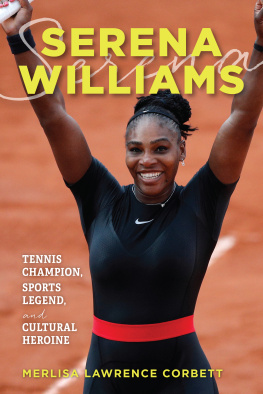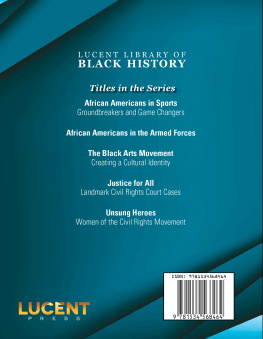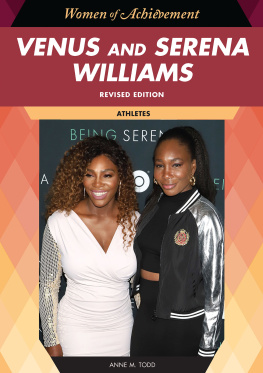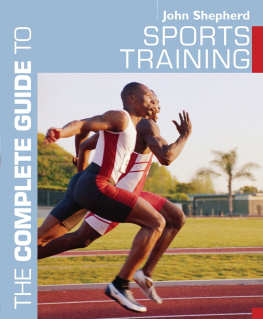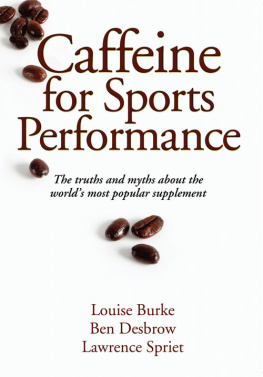
Published in 2014 by Britannica Educational Publishing (a trademark of Encyclopdia Britannica, Inc.) in association with The Rosen Publishing Group, Inc.
29 East 21st Street, New York, NY 10010
Copyright 2014 by Encyclopdia Britannica, Inc. Britannica, Encyclopdia Britannica, and the Thistle logo are registered trademarks of Encyclopdia Britannica, Inc. All rights reserved.
Rosen Publishing materials copyright 2014 The Rosen Publishing Group, Inc. All rights reserved.
Distributed exclusively by Rosen Publishing.
To see additional Britannica Educational Publishing titles, go to rosenpublishing.com.
First Edition
Britannica Educational Publishing
J.E. Luebering: Director, Core Reference Group
Anthony L. Green: Editor, Comptons by Britannica
Rosen Publishing
Hope Lourie Killcoyne: Executive Editor
Jeanne Nagle: Editor
Nelson S: Art Director
Brian Garvey: Designer, cover design
Cindy Reiman: Photography Manager
Marty Levick: Photo Research
Cataloging-in-Publication Data
Top 101 athletes/editor, Jeanne Nagle.
pages cm.(People you should know)
Includes bibliographical references and index.
ISBN 978-1-62275-135-8 (eBook)
1. AthletesBiographyJuvenile literature. 2. SportsBiographyJuvenile literature. I. Nagle, Jeanne.
GV697.A1T67 2014
796.0922dc23
[B]
2013033328
On the cover: A panoply of top athletes are pictured, including (top, left to right) Cristiano Ronaldo Gerard Julien/AFP/Getty Images; Mia Hamm Charley Gallay/Getty Images; Usain Bolt thelefty/Shutterstock.com; Jackie Joyner-Kersee Stephen Lovekin/Getty Images; (bottom, left to right) Serena Williams Matthew Stockman/Getty Images; Michael Phelps Fabrice Coffrini/AFP/Getty Images; Peyton Manning Getty Images; and Babe Ruth Library of Congress Prints and Photographs Division.
Cover and interior pages (top) iStockphoto.com/Ren Mansi
Contents
N o one can say exactly when sports began, but since ancient times people have wrestled, engaged in footraces, and hunted for sport. Archaeological evidence indicates that ball games were common among ancient peoples in many parts of the world.
In some ancient cultures, sports were a part of religious practices. The most famous association of sports and religion was certainly the Olympic Games, which Greek tradition dates from 776 BCE . The ancient Greeks played these games to honor their gods. Later the ancient Romans related athletic games to military skills, not religion. The athletic contests they preferred included such sports as boxing, wrestling, chariot racing, and throwing spearlike sticks called javelins.
After ancient times people continued to play sports, but they were usually unorganized. Organized sports became more common in the 1700s and 1800s. In England the sport of cricket developed around 1787, and what came to be known as association football, or simply soccer, was codified beginning in the 1840s. By the late 19th century, the United States had begun to rival Great Britain as an inventor of modern sports with the developments and popularizations of baseball and basketball. Since ancient times, organized sports have been a way of testing strength and merit.
Beyond thrilling spectators, however, athletes and the way they have conducted themselves on and off the field of play have also served as an inspiration. This book chronicles the personal lives and athletic achievements of some of the greatest sports persons of all time. Many of the individuals profiled in these pages are record- holders and record-breakers. Among them is Michael Phelps, who broke Mark Spitzs record for the most gold medals won by an individual at a single Olympiad. In addition to holding a number of running world records, Usain Bolt is the first person to have won gold medals in both the 100- and 200-meter races at consecutive Olympiads. Most valuable players (MVPs) and Hall of Famers such as Babe Ruth (baseball), Larry Bird (basketball), Wilma Rudolph (track), Pete Sampras (tennis), and Gale Sayers (football) are also represented.
Facing adversity, Jim Thorpe was stripped of his amateur status, and his Olympic victories lay under a cloud until he was reinstated, unfortunately only after his death. Baseball players Jackie Robinson and Hank Aaron were targets of racial intolerance during their time in the major leagues, yet both managed to persevere and excel at their sport. American runner Jesse Owens is famous for upstaging Adolf Hitlers Aryan propaganda by winning four gold medals at the 1936 Berlin Olympics.
Athletes strive to perform well despite setbacks and obstacles. Some obstacles are health-related. Tennis players Andre Agassi and Serena Williams and bicyclist Greg LeMond each overcame possible career-endingeven life-threatening, in the case of Williams and LeMondinjuries and health issues to stage astonishing comebacks in their respective fields.
A number of athletes have become famous for reasons other than their athletic prowess. Multiple Olympic gold-medal distance runner Emil Zatopek was stripped of his Czechoslovakian military rank, thrown out of the Communist Party, and hindered in his later coaching career after he showed his support for reforms during the Prague Spring of 1968. After she retired from competition, Canadian dual-athlete Clara Hughes became a crusader for mental health patients, committing to perform a cross-country bike ride to raise funds and awareness. Earvin Magic Johnson, who was diagnosed with HIV while still an active basketball player, has become a spokesperson in the fight against AIDS since his retirement.
Athletes must possess a strong sense of self, uncommon motivation, and a steely determination to succeed. Each of the profiled athletes has possessed all these traits and more. Learning about the paths they took to the top gives readers a greater appreciation of these athletes accomplishments, as well as what it means to be an athlete.
(b. 1934 )
T hrowing a fastball by Henry Aaron is like trying to sneak sunrise past a rooster, St. Louis pitcher Curt Simmons once said, expressing the frustration that pitchers around the league felt while facing one of the most productive power hitters in U.S. Major League Baseball history. By the start of the 1974 season, Aaron had already rewritten the sports record book with his brilliant and consistent batting statistics. The best was yet to come, however. On April 8, Hammerin Hank surpassed the mark set by the legendary Babe Ruth with his 715th home run, breaking a record that many experts had long considered untouchable.
Henry Louis Aaron was born on Feb. 5, 1934, in Mobile, Ala. Even as a young boy, Aaron aspired to play baseball professionally, but he initially played football instead because his high school did not field a baseball team. At age 16 he began playing shortstop with the semiprofessional Mobile Black Bears. The next year Aaron was signed for $200 a month by the Indianapolis Clowns, a Negro League team that he had impressed with his performance in an exhibition game. Aarons raw talent soon caught the attention of scouts from the New York Giants and the Boston Braves, one of whom persuaded the right-handed Aaron to switch his unorthodox, cross-handed batting style to a conventional grip. He hit two home runs in his first game using the new approach.
Aaron spent just a few months with the Clowns in 1952 before the Braves outsmarted the Giants to buy his contract for $10,000. He played shortstop and second base for two seasons on minor league teams in Eau Claire, Wisconsin, and Jacksonville, Florida, winning the Rookie of the Year Award in 1952 and Most Valuable Player (MVP) honors in 1953, before shifting to the outfield while playing in Puerto Rico during the off-season. He joined the Braves, who had moved to Milwaukee, as a starting outfielder for the opening day of the 1954 season after an injury sidelined Bobby Thomson, the expected starter. Aaron posted solid numbers in his rookie year, hitting for an average of .280 with 13 home runs and 69 runs batted in (RBI) despite a broken ankle that limited his season to 122 games. In 1955 Aaron established himself as a perennial All-Star with a .314 batting average, 27 home runs, 106 RBI, and 105 runs scored. The following year he won the first of his two National League batting titles with an average of .328 while also leading the league in hits and doubles. Aaron was named the National Leagues MVP in 1957 after his .322 average and league-leading 44 home runs and 132 RBI helped the Braves capture their first World Series title. In the seven-game championship series, Aaron batted .393 with three home runs against a powerful New York Yankees team.







